Cotton Castle, or Pamukkale, is a remarkable natural wonder located in southwestern Turkey. It is famous for its surreal, white terraces formed by the accumulation of mineral-rich waters over thousands of years.
The ancient city of Hierapolis was established atop the stunning white terraces. The ancient ruins of Hierapolis, including well-preserved theaters, temples, and necropolises, can be explored in conjunction with a visit to Pamukkale.
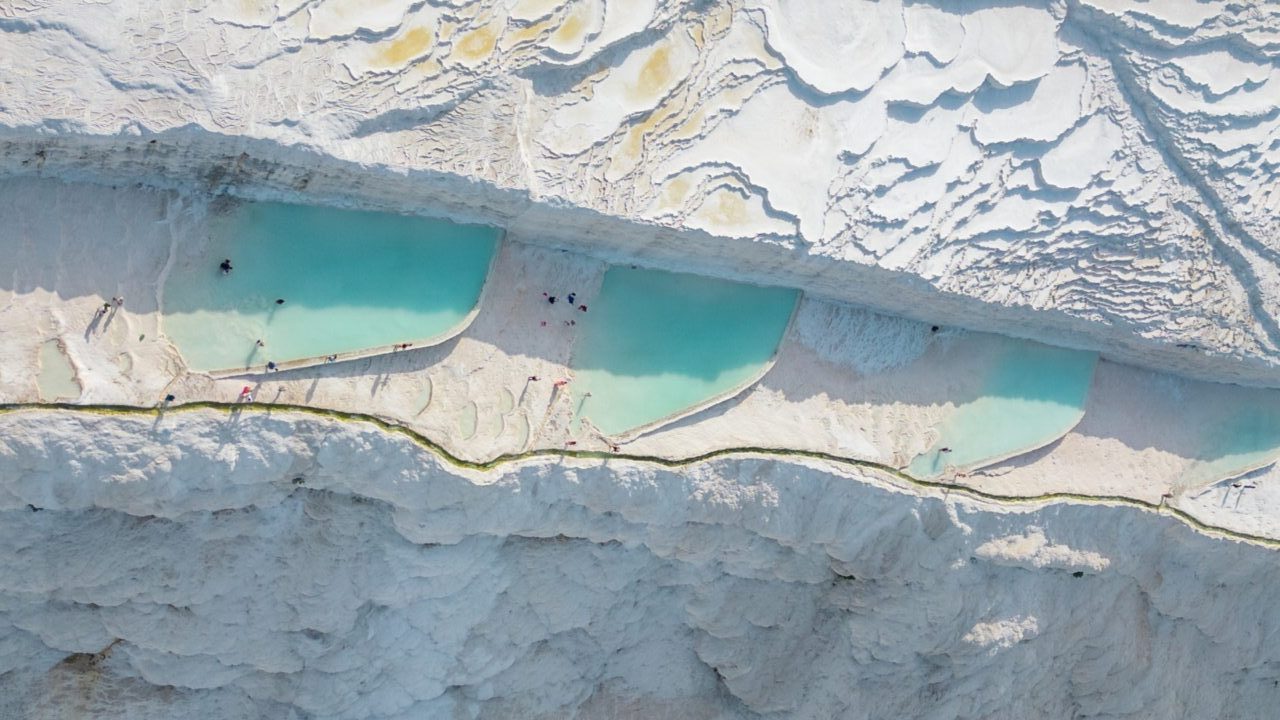
HOW TO GET THERE
The closest airport to Pamukkale is Denizli Cardak Airport (DNZ), which receives domestic flights from major cities in Turkey. From the airport, you can take a taxi or use public transportation to reach Pamukkale, which is about 65 kilometers (approx. one hour drive) away.
There are also tour options from Istanbul, but be aware that the drive from Istanbul to Pamukkale can take 6-8 hours, so much of the 15 hour tour day will be spent on the road.
You might find it more worthwhile to do a 2-day tour, which includes a trip to the incredible ancient city of Ephesus.
ADMISSION PRICE AND HOURS
Entrance is 700 TL (~26 USD), and includes access to Cotton Castle and Hierapolis.
To access the Archaelogy Museum located within the grounds, it is another 8 TL (~0.30 USD).
To swim in Cleopatra’s Antique Pool it costs 100 TL (~3.70 USD), and an additional 5 TL (~0.20 USD) for the locker fee.
Opening hours are daily between 8:00am and 9:00pm, with the box office closing at 8:30pm.
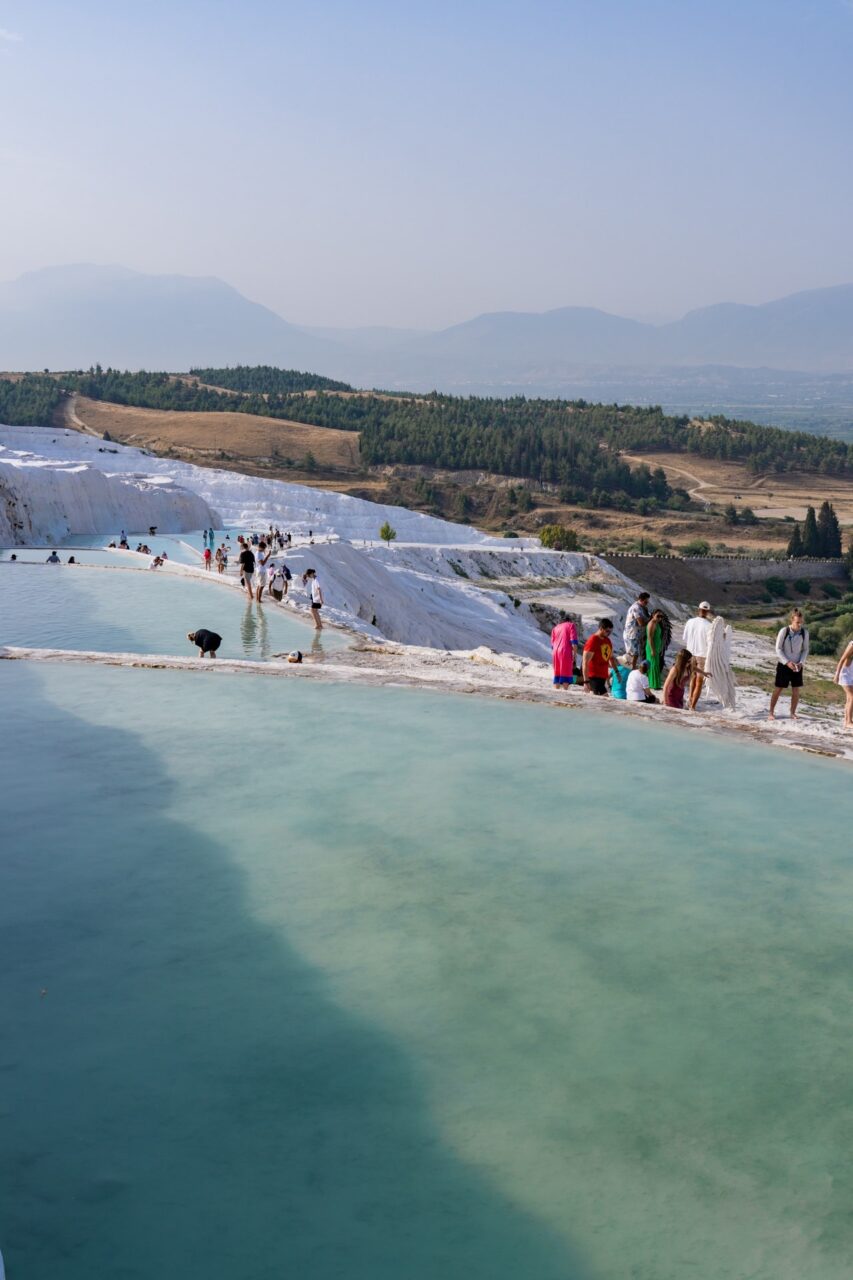
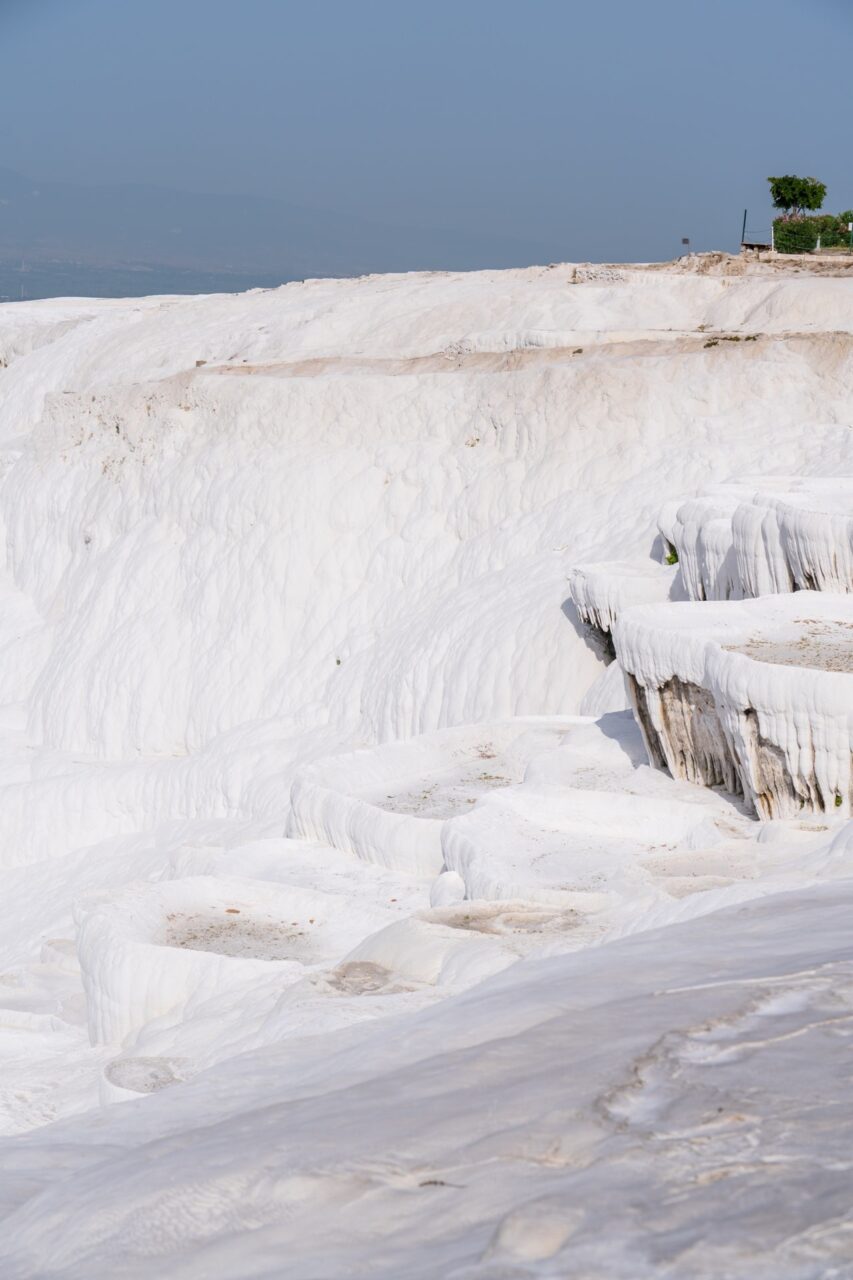
ABOUT THE COTTON CASTLE
Pamukkale is Turkish for “cotton castle”, and the name perfectly describes the striking appearance of this UNESCO World Heritage Site.
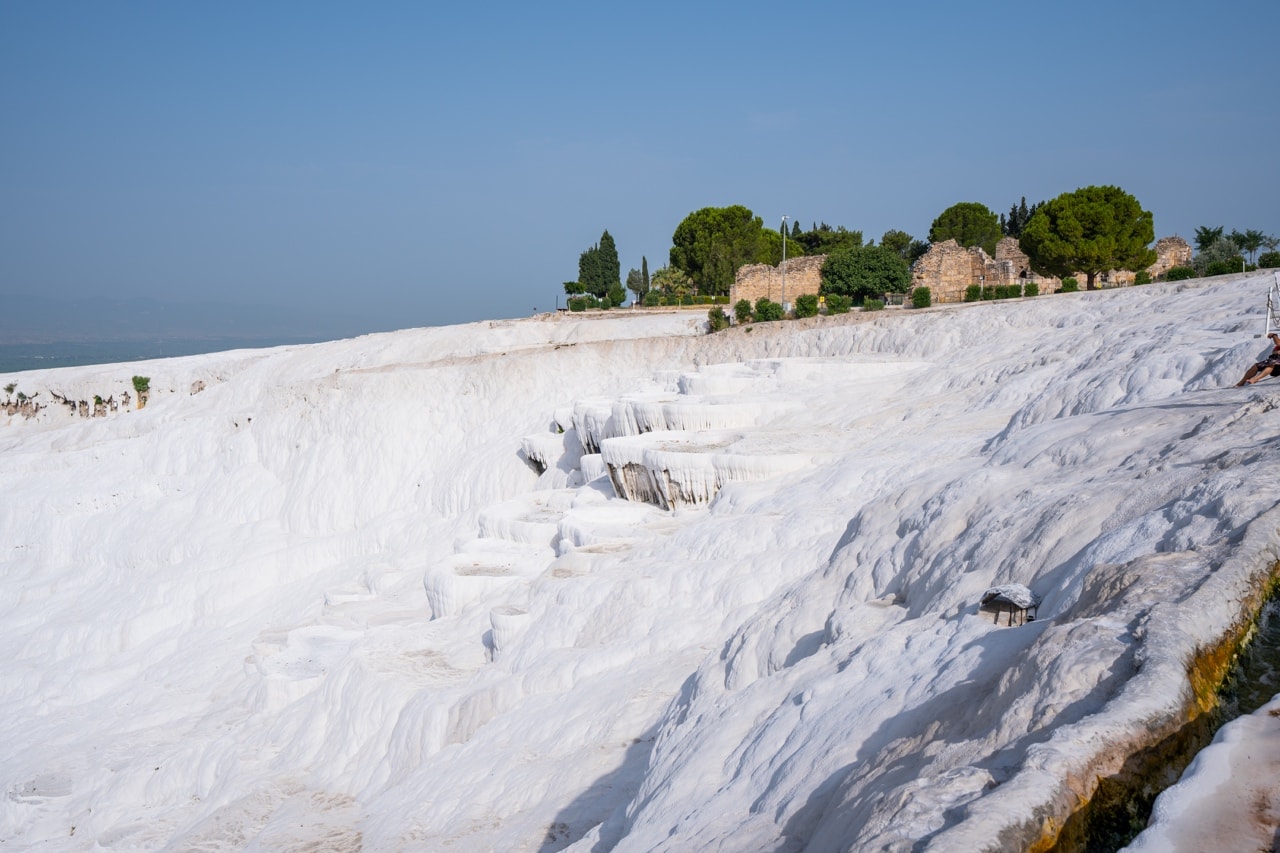
The terraces are composed of travertine, a type of sedimentary rock that is formed by the precipitation of calcium carbonate from the mineral-rich hot springs. The hot springs are fed by underground geothermal activity, and as the water flows over the terraces, it cools and the calcium carbonate is deposited, creating the unique and otherworldly landscape.
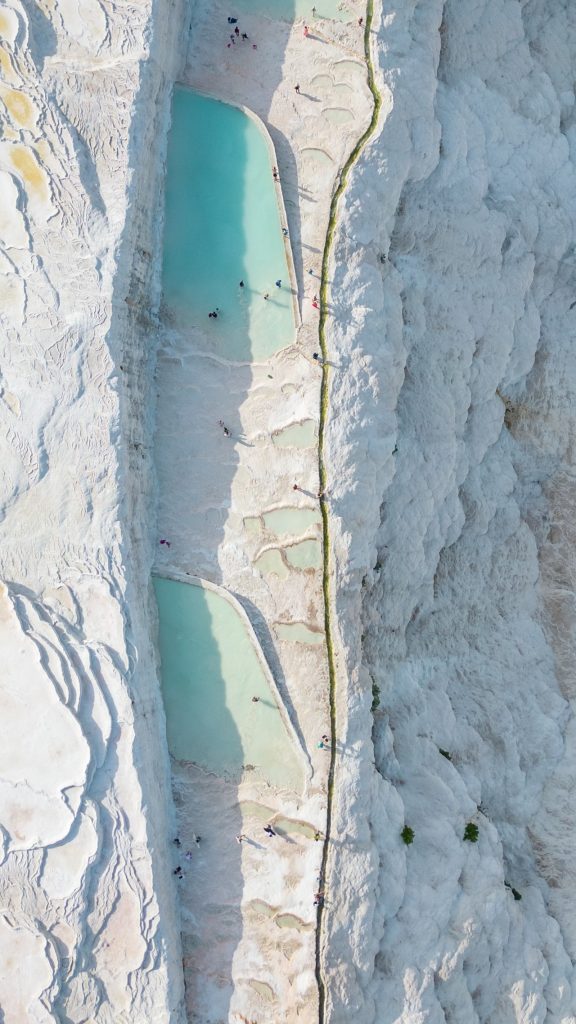
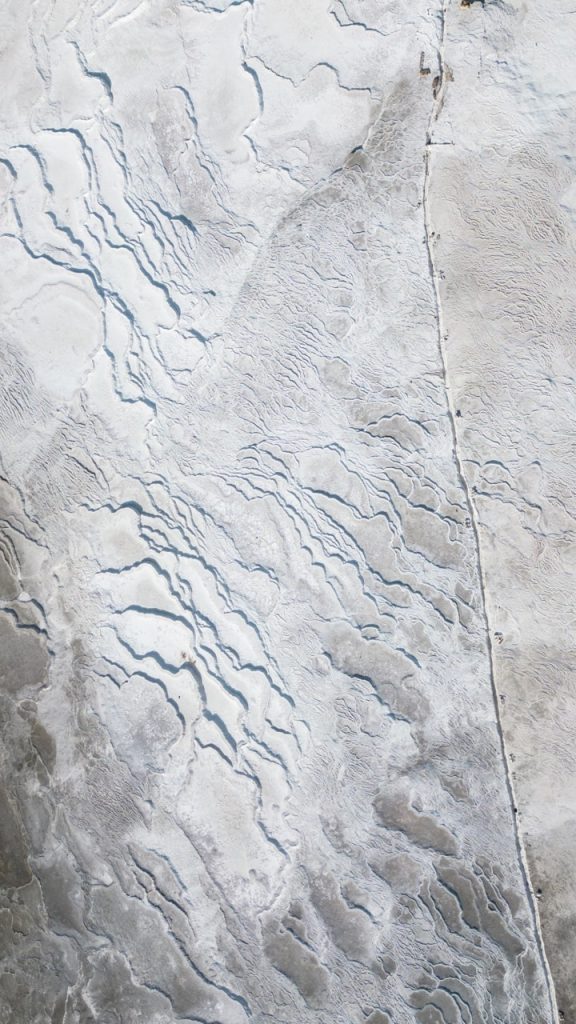
The white terraces gleam in the sunlight, resembling a cascading frozen waterfall or a castle built of cotton, which has earned the site its poetic name. The mineral-rich waters are also believed to have therapeutic properties, attracting visitors seeking relaxation and wellness.
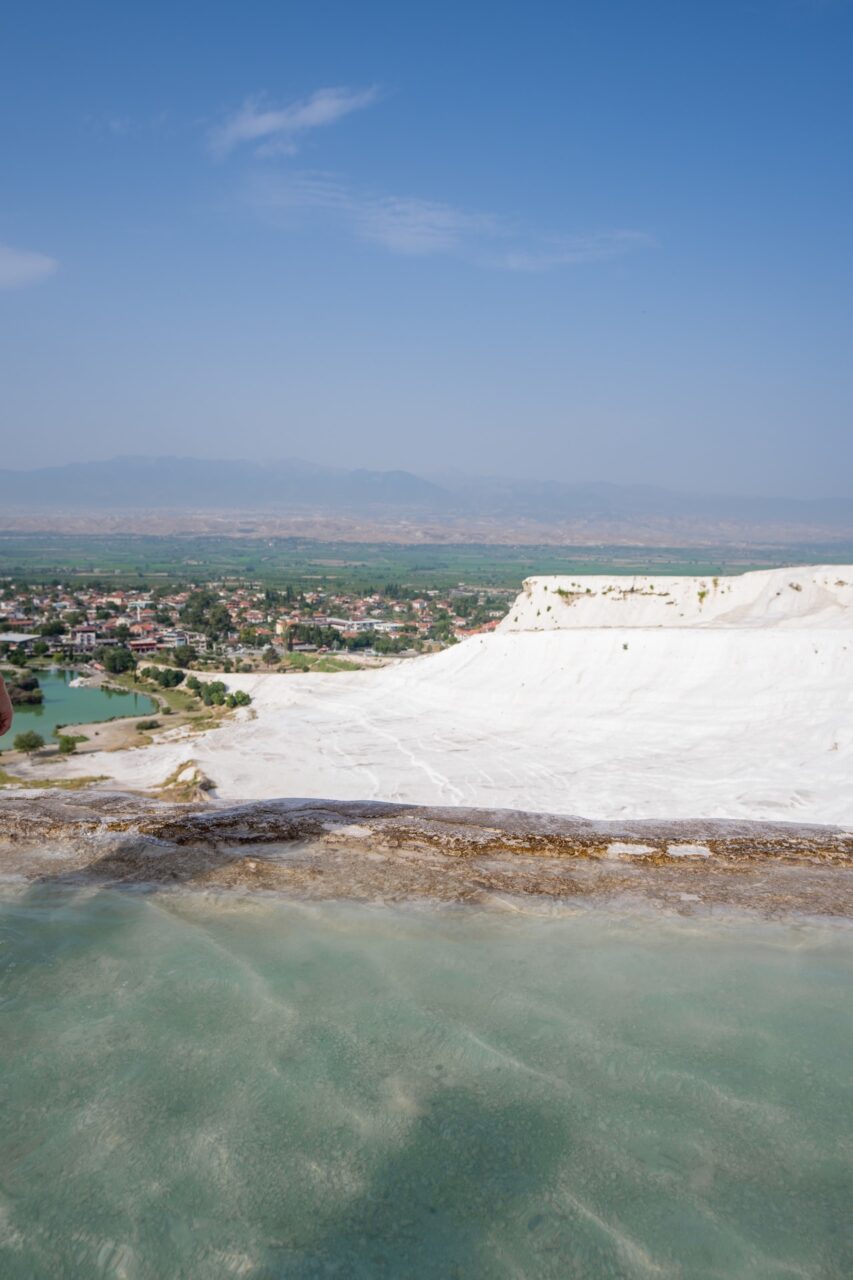
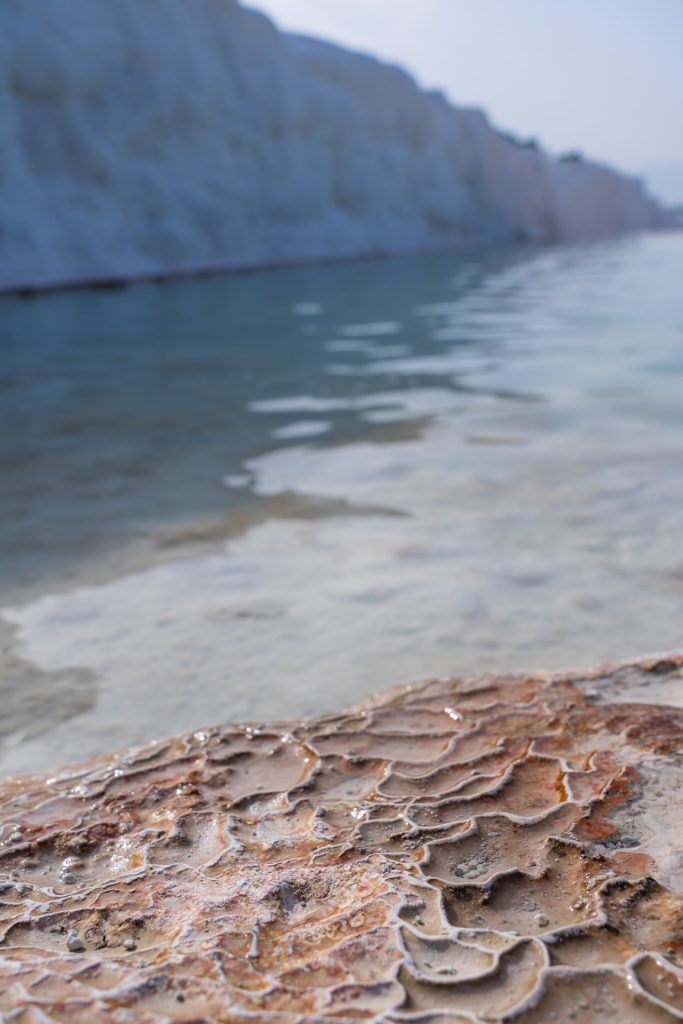
ABOUT HIERAPOLIS
The name Hierapolis translates to “holy city” in Ancient Greek, and the city’s existence was closely tied to the nearby thermal springs and terraces of Pamukkale. The hot springs attracted people seeking healing and relaxation, making Hierapolis a popular spa destination during ancient times.
One of the most notable features of Hierapolis is its well-preserved theater, which is one of the largest in Turkey, capable of accommodating thousands of spectators.
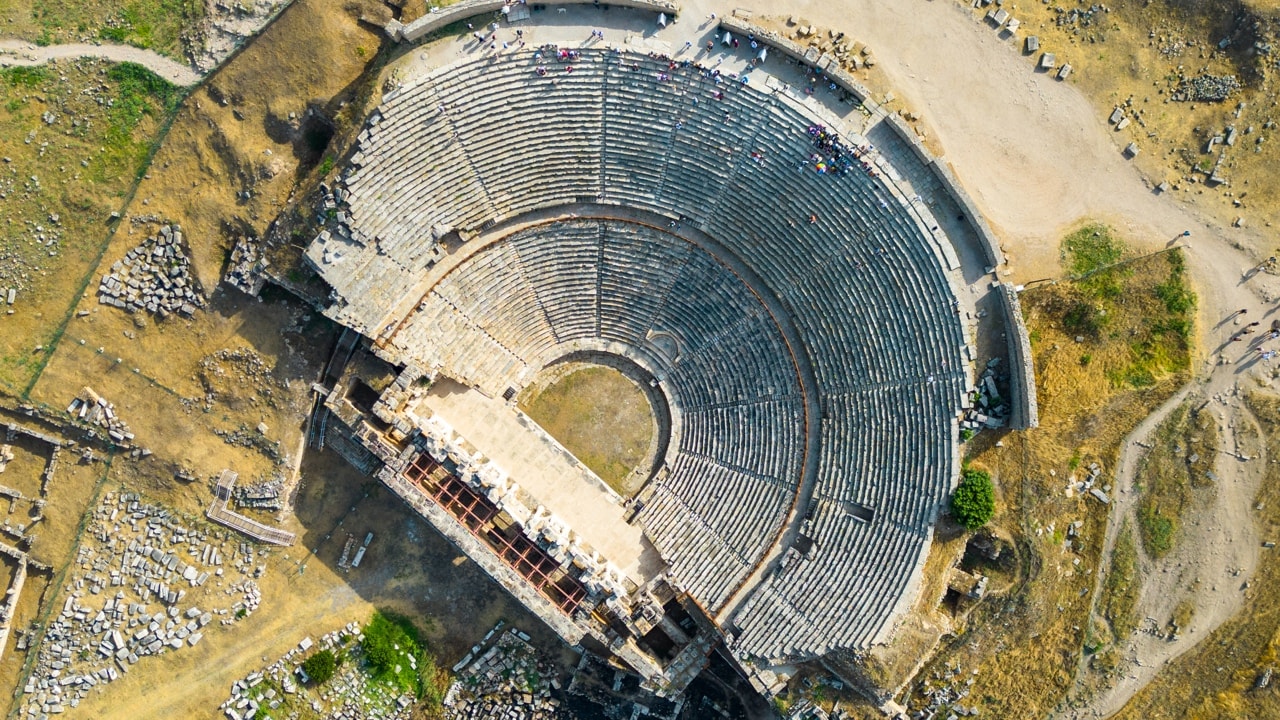
Today, Hierapolis is an open-air museum, allowing visitors to wander through the ancient streets and explore the remnants of a once-thriving city. The combination of Hierapolis’ historical significance and the awe-inspiring natural beauty of Pamukkale makes this site a popular destination for tourists seeking to immerse themselves in Turkey’s rich cultural and historical heritage.
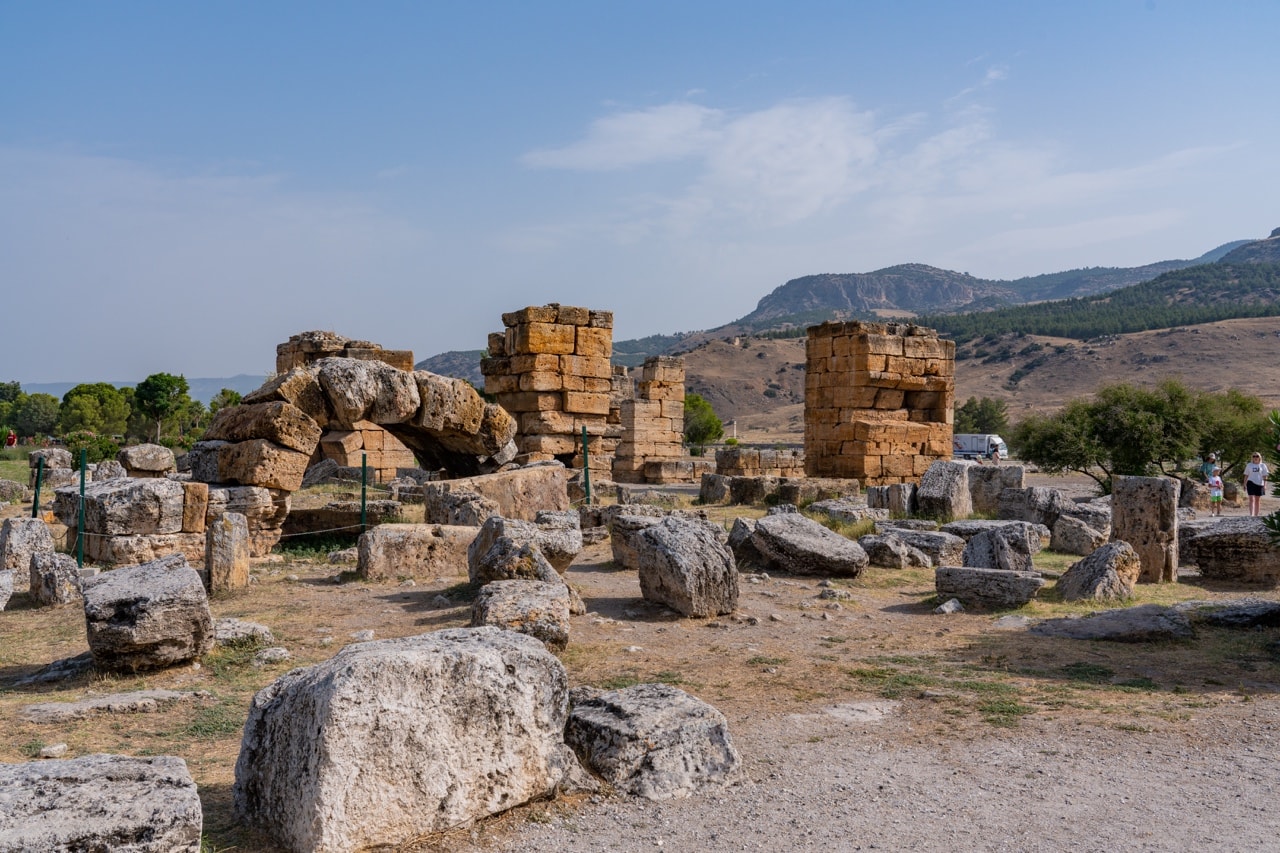
CLEOPATRA’S ANTIQUE POOL
Within the Hierapolis archaeological site, you’ll find Cleopatra’s Antique Pool, a thermal pool filled with ancient columns. The warm, therapeutic waters of the pool have been inviting visitors for centuries, with many believing that they have healing properties for various ailments.
Entrance into the pool complex is completely free. However, if you want to swim in the crystal clear waters, it is 100 TL (~3.70 USD), with the locker fee of 5 TL (~0.20 USD).
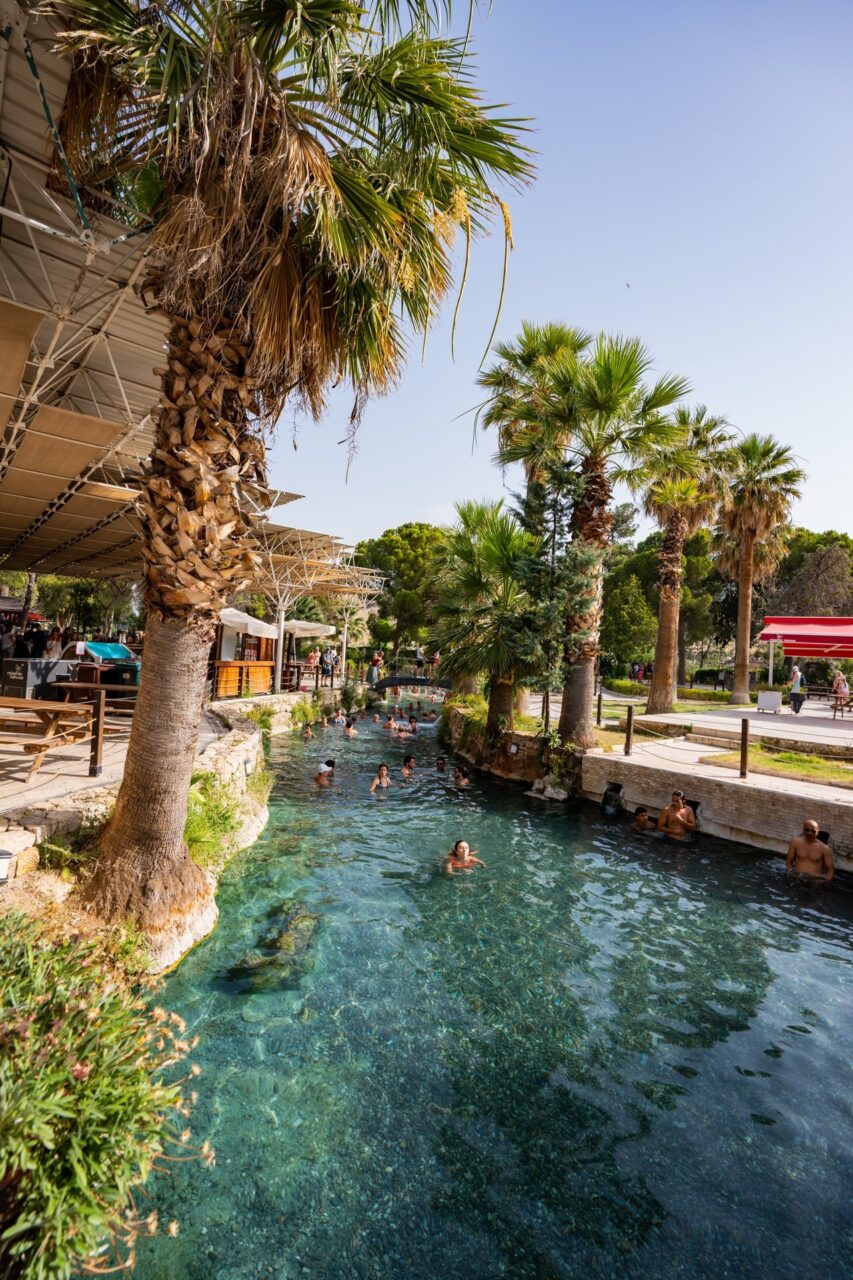
The pools got their name based on the idea that Cleopatra, the famous queen of ancient Egypt, bathed in Hierapolis. According to the legend, Cleopatra traveled far and wide to find the most luxurious and rejuvenating baths. When she heard of the therapeutic and healing properties of Hierapolis’ hot springs, she was drawn to the city to experience the restorative powers of the thermal waters. It is said that Cleopatra and her lover, the Roman general Mark Antony, indulged in the healing baths together.
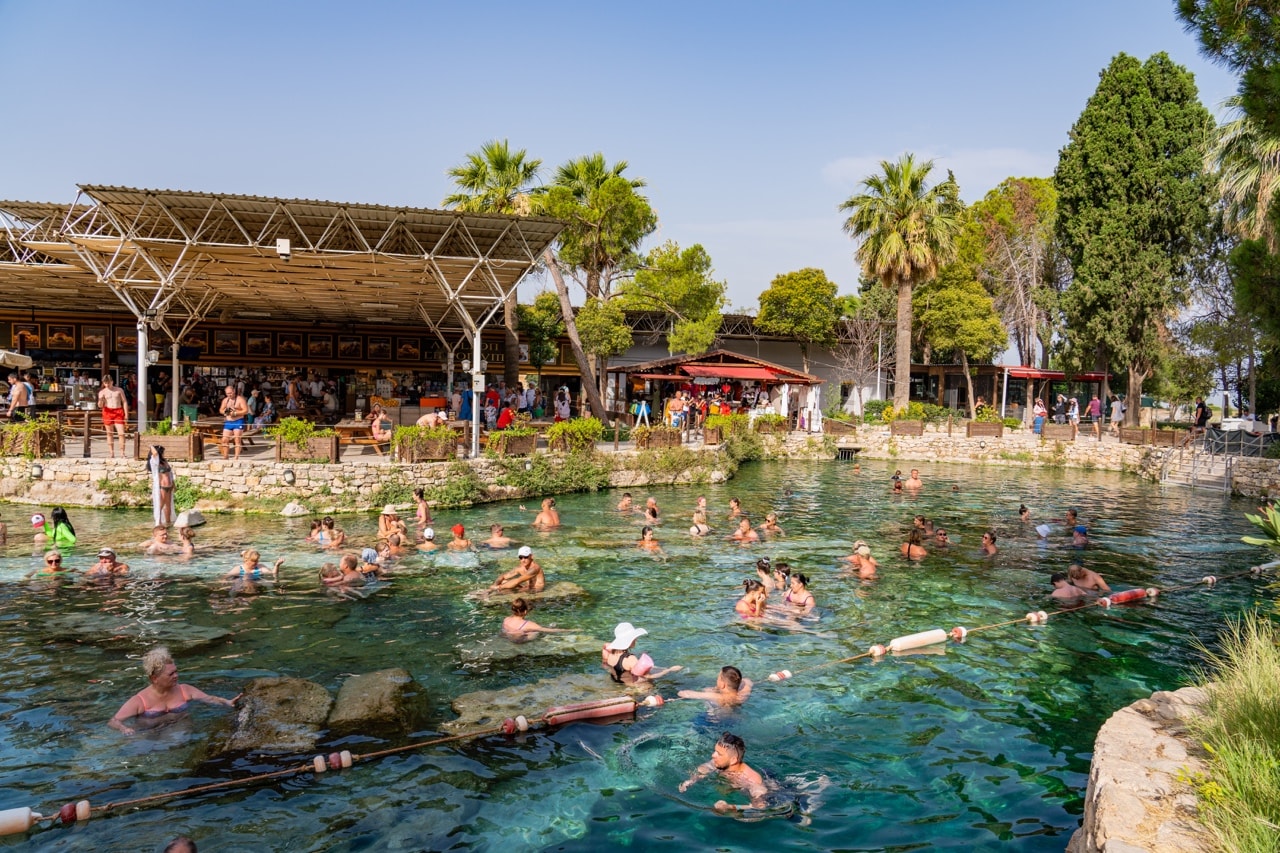
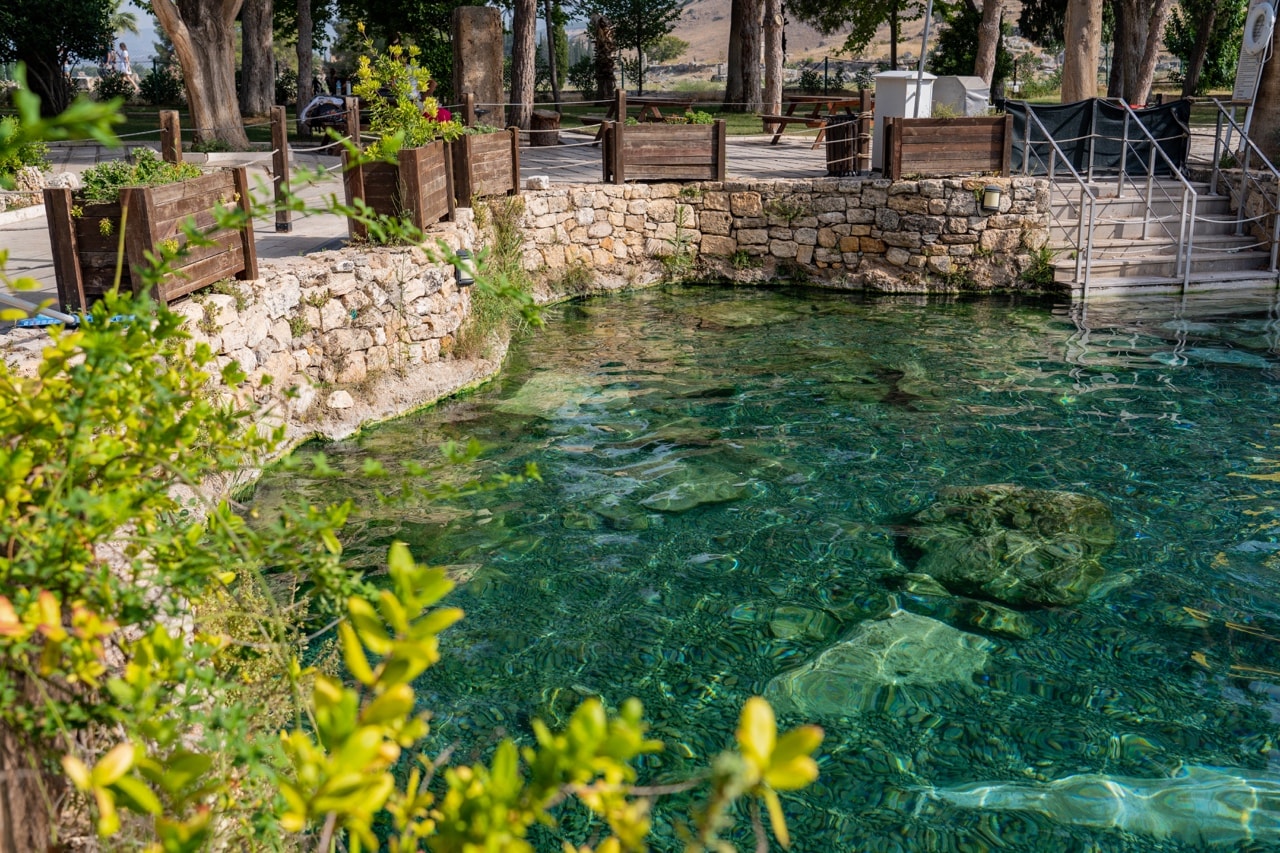
However, it isn’t know for sure if this is truth or legend. The story of Cleopatra bathing in Hierapolis comes from speculation and some ancient writings, folklore, and oral traditions passed down through generations. The exact details of her travels throughout her life may have been lost or exaggerated over time, making it challenging to separate fact from fiction.
While the exact historical accuracy of Cleopatra’s visit to Hierapolis remains a mystery, the tale of her bathing in the thermal waters has contributed to the allure and charm of the ancient city. It has become part of the rich tapestry of Hierapolis’ history, adding an element of romance and fascination to the site’s already intriguing past.
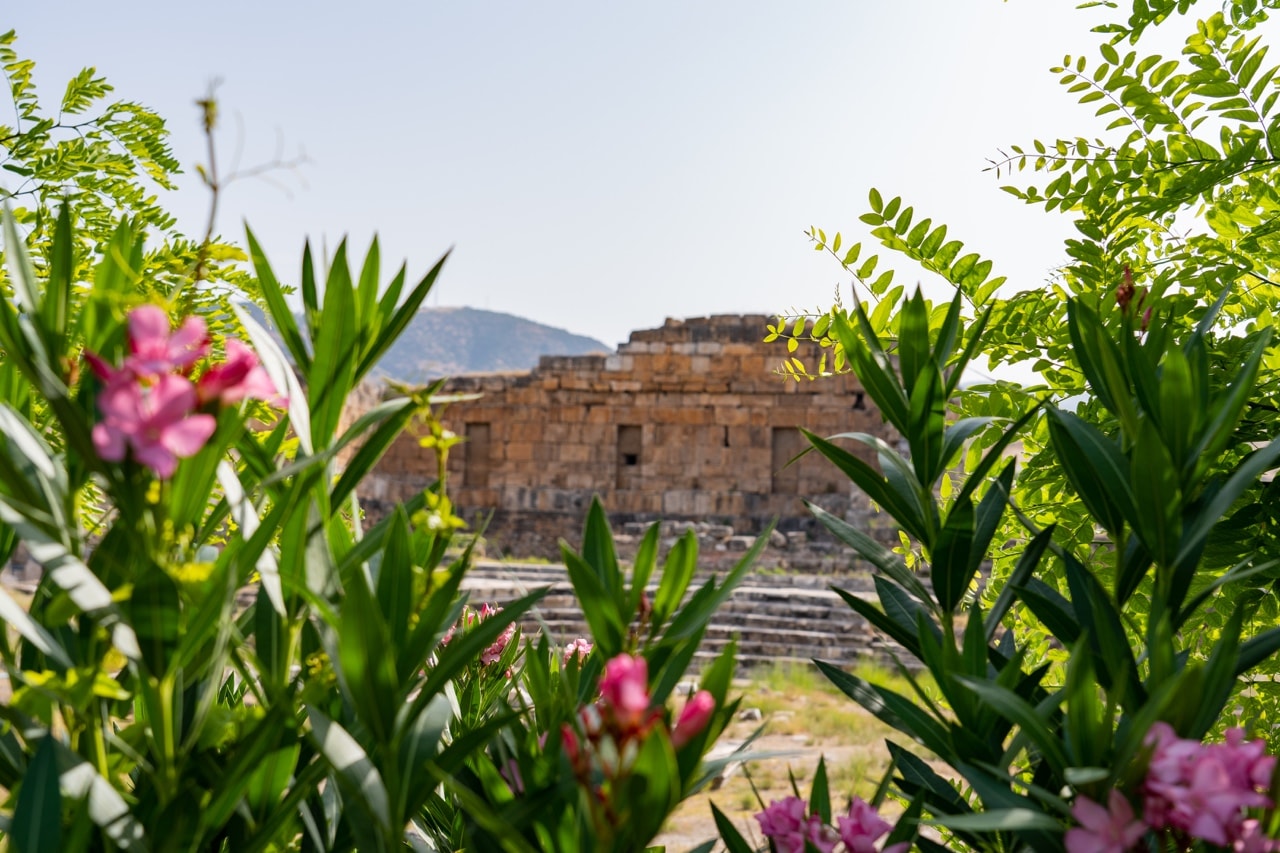
KEEP IN MIND
- You can access the Cotton Castle travertine terraces via a boardwalk from the entrance. Be sure to remove your shoes before entering the pools to protect the delicate formations and enjoy walking in the warm, mineral-rich waters. You’ll be rewarded with breathtaking views of the surrounding landscape.
- Don’t forget to bring sunscreen, a hat, and plenty of water, as the sun can be intense, especially during summer.
- It’s advisable to visit early in the morning or late in the afternoon to avoid the crowds and enjoy the terraces more peacefully.
- Be respectful of the rules and regulations set by the authorities to preserve this natural wonder for future generations.

Remember, Pamukkale is a unique place, and it’s crucial to treat the natural beauty with respect and care. Enjoy your trip and the breathtaking wonders of Cotton Castle and Hierapolis!
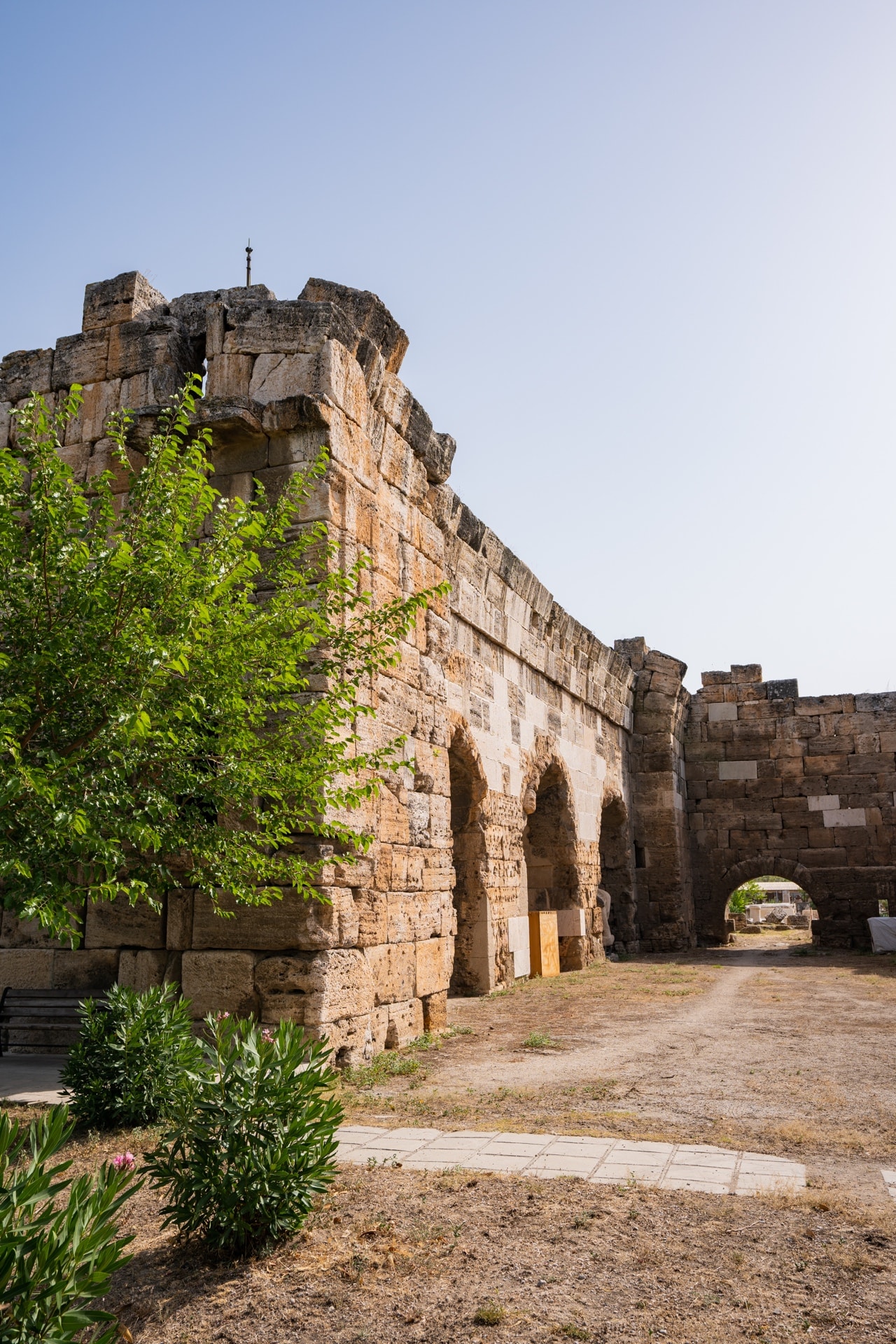
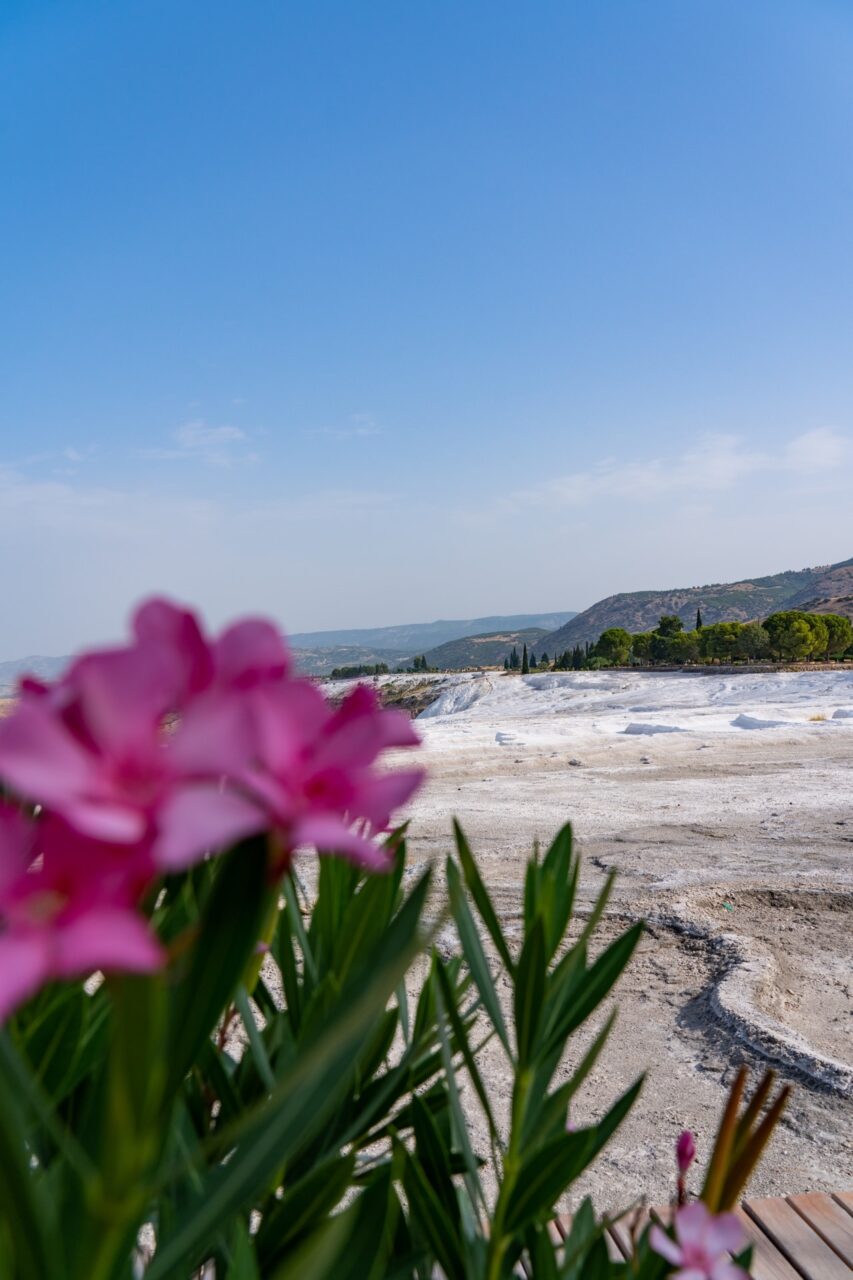
To check out our full Pammukale gallery, click here!
